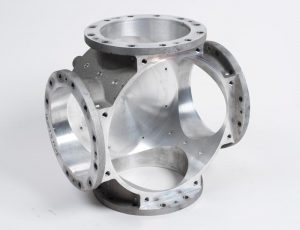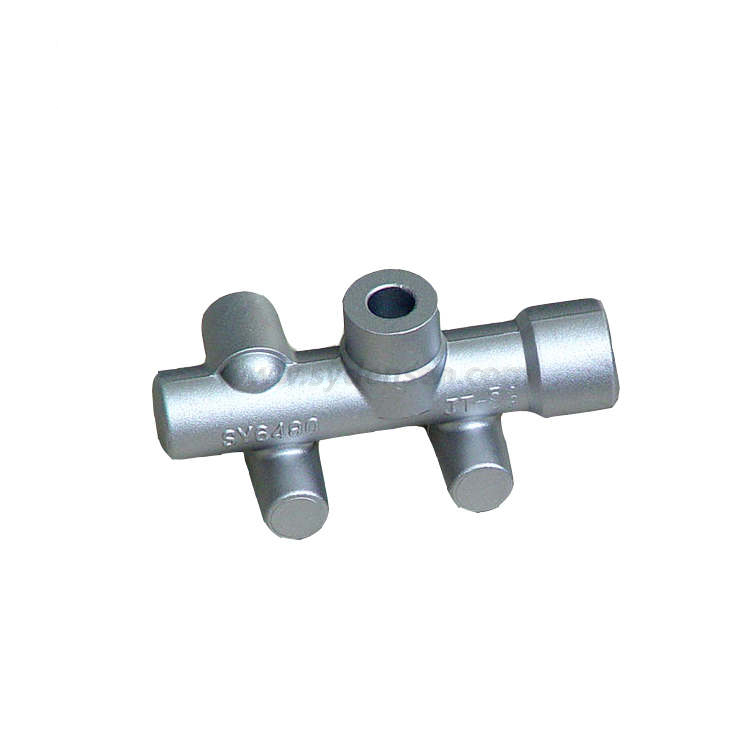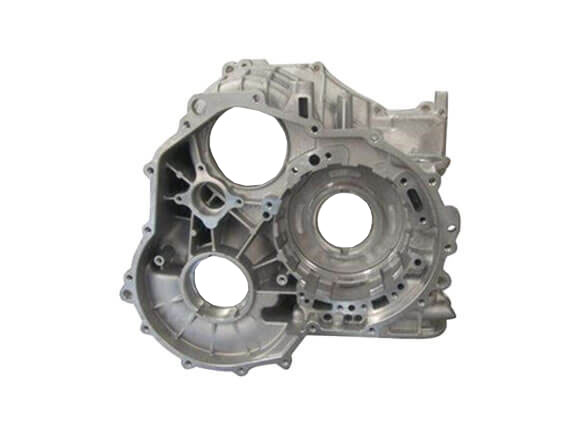Aluminum Casting Explained: Secret Truths and Insights for Sector Professionals
Aluminum casting works as an essential procedure in modern production, forming elements across various fields. Its varied methods, such as sand and die casting, satisfy different production needs. The distinct properties of aluminum alloys boost their applicability, yet challenges continue to be in maintaining quality and effectiveness. Understanding these elements is vital for industry professionals. What are the most current developments and best practices that can additionally enhance this procedure?
Summary of Aluminum Casting Processes

Crucial element of aluminum casting procedures consist of the prep work of mold and mildews, which may be made from sand, steel, or ceramic materials, depending upon the intended usage. Furthermore, temperature level control is crucial to ensure appropriate melting and solidification of aluminum.
The casting process permits elaborate styles and can achieve high levels of dimensional accuracy. Once cooled, the spreadings may undergo ending up operations such as machining or surface area treatment to meet details efficiency standards. In general, aluminum casting works as a functional production technique, successfully meeting the varied requirements of numerous markets.
Sorts Of Aluminum Casting Techniques
In the domain name of aluminum casting, various approaches are used to attain different results. Sand casting methods offer flexibility and cost-effectiveness for complicated shapes, while die casting procedures supply high precision and effectiveness for automation. Recognizing these approaches is important for choosing the suitable strategy based on project needs.
Sand Casting Methods
Sand casting methods stand for a fundamental technique in aluminum casting, where sand is made use of as a mold and mildew material to form liquified metal. This procedure involves producing a pattern from the desired component, which is then positioned in a sand blend to create a mold and mildew. The sand is compressed around the pattern, and after removal, it produces a dental caries in the shape of the part. Molten aluminum is put into this dental caries, enabling it to solidify and cool down. One significant advantage of sand casting is its versatility; it can fit complex shapes and huge parts. Furthermore, the products used are relatively cost-effective, making it an available option for different manufacturing applications in the aluminum sector.
Die Casting Processes
Die casting processes are a popular method for shaping aluminum parts, making use of high-pressure strategies to force liquified steel into precisely engineered mold and mildews. This process is specifically favored for its ability to generate intricate forms with limited tolerances and a smooth surface. There are 2 main types of die casting: hot chamber and cool chamber. Warm chamber die casting is suitable for steels with low melting factors, permitting faster production prices. Alternatively, chilly chamber die casting is excellent for higher melting factor metals, requiring a separate melting heater. Both techniques boost performance and reduce product waste, making them essential in automotive, aerospace, and durable goods markets. Recognizing these procedures helps professionals choose one of the most appropriate technique for their details applications.
Material Quality of Aluminum Alloys

Toughness and Longevity
Stamina and durability are crucial features of aluminum alloys that make them ideal for different casting applications. These products display a desirable strength-to-weight ratio, permitting the production of light-weight yet robust components. With regard to tensile stamina, particular aluminum alloys can be engineered to hold up against significant lots without deforming. This home is especially vital in markets such as aerospace and auto, where performance and safety and security are extremely important. Additionally, aluminum alloys typically maintain their mechanical buildings under diverse temperature problems, making certain consistent efficiency. The inherent ductility of these alloys likewise permits efficient shaping throughout the casting procedure, making it simpler to produce complex geometries. In general, the strength and durability of aluminum alloys contribute considerably to their widespread use in advanced applications.
Corrosion Resistance Characteristics
While aluminum alloys are valued for their strength and light-weight properties, their rust resistance is one more essential quality that boosts their viability for different applications. Aluminum naturally creates a protective oxide layer when subjected to moisture, which helps to stop further oxidation. This integral home makes aluminum alloys specifically important in atmospheres prone to rust, such as aquatic and industrial settings. In addition, various alloy compositions can affect resistance degrees, with specific alloys particularly crafted to improve this characteristic. Treatments like plating can further improve rust resistance by enlarging the oxide layer. Understanding the rust resistance of aluminum alloys is important for industry professionals when choosing products for projects requiring durability and longevity in tough settings.
Benefits of Aluminum Casting in Manufacturing
Aluminum casting deals many benefits in production, making it a recommended option for different sectors. One considerable advantage is its light-weight nature, which adds to minimized transport prices and boosted energy effectiveness in final result. Moreover, aluminum's excellent thermal and electric conductivity boosts functionality in applications calling for warm dissipation or electrical transmission.
The material's ability to be cast right into elaborate forms permits layout versatility, decreasing the need for added machining processes. In addition, aluminum casting shows superior corrosion resistance, leading to longer product lifespans and reduced upkeep expenses.

Usual Applications of Aluminum Castings
The versatility of aluminum casting enables its widespread usage across various industries. Common applications consist of vehicle components, where lightweight and corrosion-resistant elements, such as engine blocks and transmission real estates, enhance automobile efficiency. In the aerospace sector, aluminum castings are utilized for structural components, offering stamina without including substantial weight.
In addition, the electric sector benefits from aluminum castings in manufacturing units and heat sinks, where thermal conductivity is vital. The customer goods sector also incorporates aluminum castings in items like kitchenware, furnishings, and ornamental products, integrating aesthetics with functionality.
The construction sector employs aluminum castings for building aspects, home window frames, and fixtures, which provide durability and style adaptability. In general, the varied applications of aluminum castings highlight their relevance in modern production, adding to improvements in performance and item style across several areas.
Advancements and Technological Advancements
As sectors remain to develop, innovations in aluminum casting innovation are transforming manufacturing processes and product abilities. Advancements in 3D printing and additive manufacturing have made it possible for the production of intricate geometries that were previously impossible to achieve with conventional methods. These technologies permit fast prototyping, lowering lead times and costs.
In addition, renovations in mold layout and materials have actually boosted the casting process by raising performance and reducing waste. The integration of smart production methods, such as IoT tools and real-time data analytics, enables much better monitoring and optimization of production criteria, leading to higher quality outputs.
Advancements in aluminum alloys give improved toughness, deterioration resistance, and lightweight residential properties, providing to the expanding needs in aerospace and automobile industries. Jointly, these innovations are not just enhancing performance yet likewise meeting the extensive standards of contemporary engineering applications.
Ideal Practices for Quality Control in Aluminum Casting
Ensuring high-grade outputs in aluminum casting needs adherence to finest techniques that include various phases of the production procedure. Complete product examination is vital to confirm the top quality of aluminum alloys made use of, as impurities can considerably impact the final item. Carrying out precise melting and putting methods lessens problems; maintaining optimal temperature levels stops oxidation and promotes uniformity.
In addition, mold layout plays a critical function; using computer-aided style (CAD) can boost precision and minimize human mistake. Routine monitoring of the cooling process is critical to stay clear visit the site of bending and contraction. Furthermore, using non-destructive screening approaches, such as ultrasonic or X-ray evaluations, helps recognize interior imperfections without harming the parts.
Establishing a comments loop with engineers and operators cultivates continuous improvement, making sure that quality control procedures progress along with technical developments. By adhering to these ideal practices, suppliers can improve the dependability and efficiency of aluminum castings.
Frequently Asked Inquiries
What Are the Ecological Influences of Aluminum Casting?
The environmental influences of aluminum casting include considerable energy consumption, greenhouse gas exhausts, and possible water air pollution from factory procedures. Additionally, bauxite mining for aluminum ore can lead to environment why not look here damage and dirt degradation.
How Does Aluminum Casting Contrast to Various Other Metal Casting Procedures?
Aluminum casting generally provides advantages in lightweight elements and deterioration resistance compared to other procedures, such as iron or steel casting, which might offer higher strength but lead to much heavier and less corrosion-resistant items. - Aluminum Foundry
What Prevail Defects in Aluminum Castings and Their Causes?
Common flaws in aluminum castings consist of porosity, shrinkage, and incorporations. Causes often originate from improper pouring methods, insufficient mold layout, or contamination of the molten metal, impacting the last product's stability and performance.
What Safety and security Safety Measures Should Be Taken Throughout Aluminum Casting?
During aluminum casting, necessary safety precautions include wearing protective equipment, ensuring proper air flow, keeping a clean work area, taking care of liquified steel with treatment, and complying with well established procedures to reduce dangers of burns, inhalation hazards, and mishaps.
How Can I Enhance the Effectiveness of My Aluminum Casting Procedures?
To enhance effectiveness in aluminum casting procedures, one need to enhance mold layout, improve material handling, use automated procedures, carry out normal upkeep on devices, and spend in employee training to enhance abilities and efficiency.
Various techniques exist, aluminum casting includes several primary processes that cater to various applications and requirements. Secret components of aluminum casting processes consist of the preparation of mold and mildews, which may be made from sand, steel, or ceramic materials, depending on the meant use. Sand casting strategies represent a basic technique in aluminum casting, where sand is made use of as a mold product to shape molten steel. As industries proceed to evolve, technologies in aluminum casting technology are changing manufacturing procedures home and product capacities. Making sure premium results in aluminum casting requires adherence to ideal techniques that include numerous stages of the manufacturing procedure.